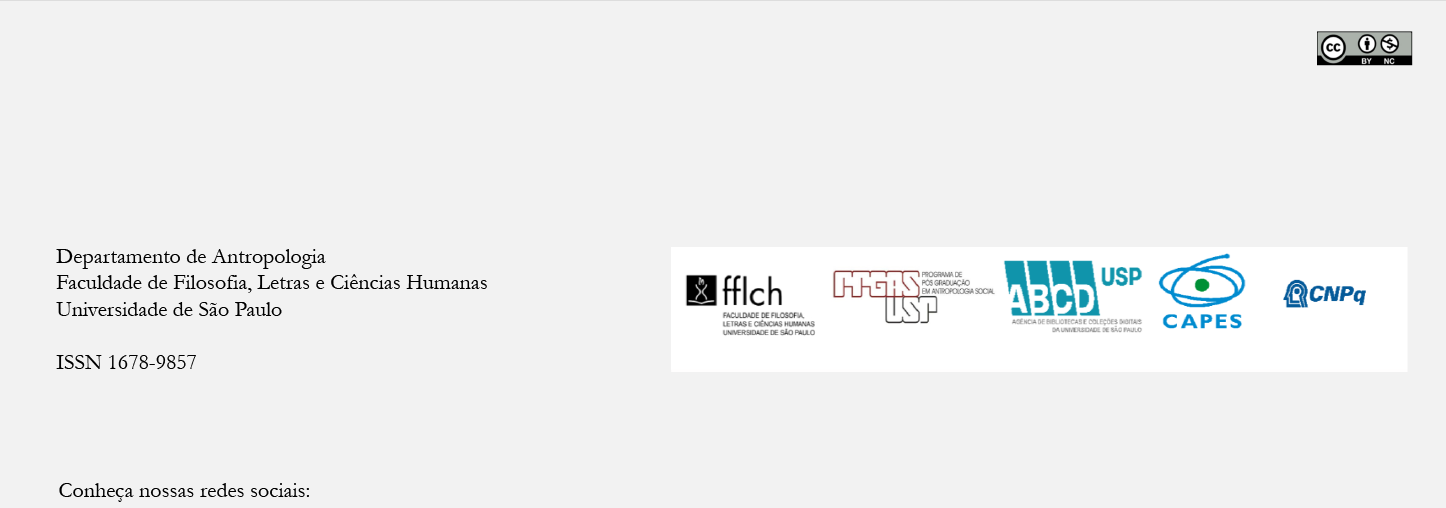“Orientate Yourself, Boy!”: What Might Anthropologists Say to Religious Pastors, Geneticists and so Many “Others” about the Controversy over the Causes of Homosexuality?
DOI:
https://doi.org/10.11606/2179-0892.ra.2016.116920Keywords:
Homosexuality, Genetics, Pentecostalism, BrazilAbstract
This paper discusses the controversy that arose from an interview broadcast by a Brazilian television channel during which a prominent Pentecostal pastor denied any biological basis for what he termed homosexualism, recommending that “patients” should convert to heterosexualism. The interview provoked comments from actors in the fields of religion (evangelical) and science (genetics/biology) on the possible causes of homosexuality. The paper examines the repercussions of this controversy among Brazilian LGBT activists and among anthropologists. It revisits the classical opposition between essentialist and constructivist perspectives, which the controversy brought to the fore and ends with an anthropological approach suggesting that the conflict between these perspectives should itself be understood as a problem for further researchDownloads
References
BLANCHARD, Ray e BOGAERT, Anthony F. 2004. “Proportion of Homosexual Men Who Owe Their Sexual Orientation to Fraternal Birth Order: An Estimate Based on Two National Probability Samples”. American Journal of Human Biology. 16(2): 151-7.
CARRARA, Sérgio e SIMÕES, Júlio. 2007. “Sexualidade, cultura e política: a trajetória da identidade homossexual masculina na antropologia brasileira”. Cadernos Pagu, 28: 65-99.
CIANI, Andrea S. Camperio; FONTANESI, Lilybeth; IEMMOLA, Francesca; GIANNELLA, Elga; FERRON, Claudia; e LOMBARDI, Luigi. 2012. “Factors Associated with Higher Fecundity in Female Maternal Relatives of Homosexual Men”. The Journal of Sexual Medicine, 9 (11): 2878-2887.
FACCHINI, Regina 2005. Sopa de letrinhas? Movimento homossexual e produção de identidades coletivas nos anos 90. Rio de Janeiro, Garamond.
FOUCAULT, Michel. 1977. História da sexualidade I: a vontade de saber. Rio de Janeiro, Graal.
FOUCAULT, Michel. 1984a. Histoire de la sexualité III: le Souci de soi, Bibliothèque des histoires. Paris, Gallimard.
FOUCAULT, Michel. 1984b. História da sexualidade II: o uso dos prazeres. Rio de Janeiro, Graal.
FREIRE COSTA, Jurandir. 1995. A face e o verso: estudos sobre homoeroticos III. São Paulo, Editora Escuta.
FRY, Peter. 1982. “Da Hierarquia à igualdade: a construção histórica da homossexualidade no Brasil”. In Para inglês ver: identidade e política na cultura brasileira. Rio de Janeiro, Zahar, pp. 87-113.
GIUMBELLI, Emerson. 2002. “Para além do trabalho de campo: reflexões supostamente malinowiskianas”. Revista Brasileira de Ciências Sociais, vol.17, n.48.
HACKING, Ian. 1995. “The Looping Effect of Human Kinds”. In SPERBER, Dan; PREMACK, David e PREMACK, Ann James (orgs.), Causal Cognition: An Interdisciplinary Approach. Oxford, Oxford University Press, pp. 351-383.
HAMER, Dean e COPELAND, Peter. 1994. The Science of Desire: the Search for the Gay Gene and the Biology of Behavior. New York, Simon and Schuster.
HERTZ, Robert. 1909. “La Prééminence de la main droite: étude sur la polarité religieuse”. Revue Philosophique, 68: 553-580.
KATZ, Jonathan Ned. 1995. The Invention of Heterosexuality. Chicago, University of Chicago Press.
KINSEY, Alfred C.; POMEROY, Wardell B.; e MARTIN, Clyde E. 1948. Sexual Behavior in the Human Male. Philadelphia, W.B. Sauders.
LAQUEUR, Thomas. 2001. Inventando o sexo: corpo e gênero dos gregos a Freud. Rio de Janeiro, Relume Dumará.
LATOUR, Bruno. 1996. Petite réflexion sur le culte moderne des dieux faitiches. Paris, Synthélabo Groupe.
LEVAY, Simon. 1991. “A Difference in Hypothalamic Structure Between Homosexual and Heterosexual Men”. Science, 253: 1034-1037.
MACHADO, Maria das Dores Campos; PICCOLO, Fernanda Devalhas (orgs.). 2010. Religiões e homossexualidades. Rio de Janeiro, Fundação Getúlio Vargas.
MCINTOSH, Mary. 1968. “The Homosexual Role”. Social Problems, 16: 182-192.
NATIVIDADE, Marcelo e OLIVEIRA, Leandro. 2013. As novas guerras sexuais: diferença, poder religioso e identidade LGBT no Brasil. Rio de Janeiro, Garamond.
NUCCI, Marina Fisher. 2010. Hormônios pré-natais e a idéia de sexo cerebral: uma análise das pesquisas biomédicas sobre gênero e sexualidade. Rio de Janeiro, dissertação, Instituto de Medicina Social, Universidade do Estado do Rio de Janeiro.
ROBINSON, Susan J. e MANNING, John T. 2000. “The Ratio of 2nd to 4th Digit Length and Male Homosexuality”. Evolution and Human Behavior, 21: 333-345.
SAHLINS, Marshal. 1976. The Use and Abuse of Biology: An Anthropological Critique of Sociobiology. Ann Arbor, University of Michigan Press.
VANCE, Carole. 1995. “A antropologia redescobre a sexualidade: Um comentário teórico”. Physis – Revista de Saúde Coletiva, vol 5, n. 1: 7-31.
VITAL, Christina e LEITE LOPES, Paulo Victor. 2013. Religião e Política uma análise da atuação de parlamentares evangélicos sobre direitos das mulheres e de LGBTs no Brasil. Rio de Janeiro, Fundação Heinrich Böll & Instituto de estudos da Religião (ISER).
WEEKS, Jeffrey. 1985. Sexuality and its Discontents: Meanings, Myths & Modern Sexualities. Londres, Routlegde & Kegan Paul.
Downloads
Published
Issue
Section
License
Copyright (c) 2016 Revista de Antropologia

This work is licensed under a Creative Commons Attribution 4.0 International License.
Authors who intend to publish in this journal must agree with the following terms:
- a) Authors retain copyright and grant the journal the right of first publication. The work is simultaneously licensed under the Creative Commons Attribution License, which allows the work to be shared as long as the author and the initial publication in this journal are appropriately credited.
- b) Authors are authorized to sign additional contracts for non-exclusive distribution of the version of the work published in this journal (e.g., to publish it as a book chapter), as long as the author and the initial publication in this journal are appropriately credited.
- c) Authors are allowed and encouraged to publish and distribute their work online (e.g. on their personal webpage) after the editorial process, for this can generate productive changes as well as increase the impact and citation of the work. See The Effect of Open Access Publications.



